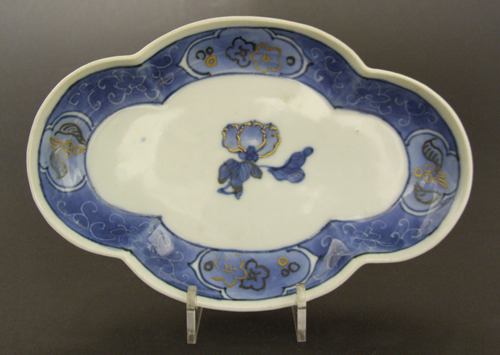
ARITA c.1655 – 1670 Japanese porcelain
A Rare 17th Century Japanese Porcelain Dish, Arita Kilns c.1655-1670. Decorated in Blue and White Employing Sumihajiki with Silver and Gold Highlights. The Center Painted in Blue with Gilt Outlines with Fruit Attached to a Small Stalk with Leaves. The Border Decorated with Different Tones of Cobalt Blue with White Scrolling Foliage Using the Sumihajiki, the Two Pairs of Cavetto Containing Prunus and Cherries in Blue with Touches of Silver and Gilt.
SOLD
- Condition
- Perfect, the silver decoration has oxidized.
- Size
- Diameter : 16.2 cm (6 1/3 inches).
- Provenance
- N/A
- Stock number
- 22449
- References
- For a very similar 17th century Japanese porcelain dish see: Commemorative Exhibition of the Donation, Shibata Collection VI, Techniques and Decorative Methods Used in the Edo Period (The Kyushu Ceramic Museum 1998) plate 293
Information
This rare dish uses gilt and silver to highlight the design, this combination was only used for a short period at Arita on pieces for the domestic market.
Sumihajiki :
This type of ceramic decoration appears in Japan just after the middle of the 17th century, although its origins are much earlier. The effect created is that of painted white lines cutting through blue, this is achieved using a wax resist type paint called `sumi` which protects the white porcelain from the cobalt blue over-painting. The `sumi` is burnt off during the firing to leaving white lines to contrast against the blue.